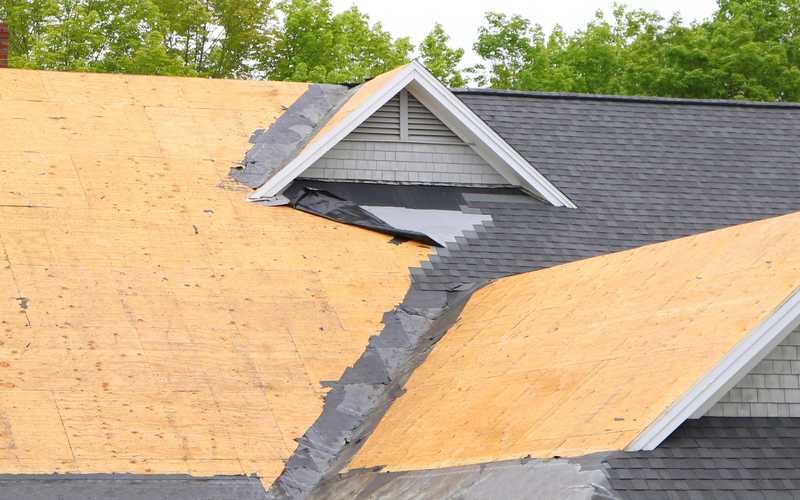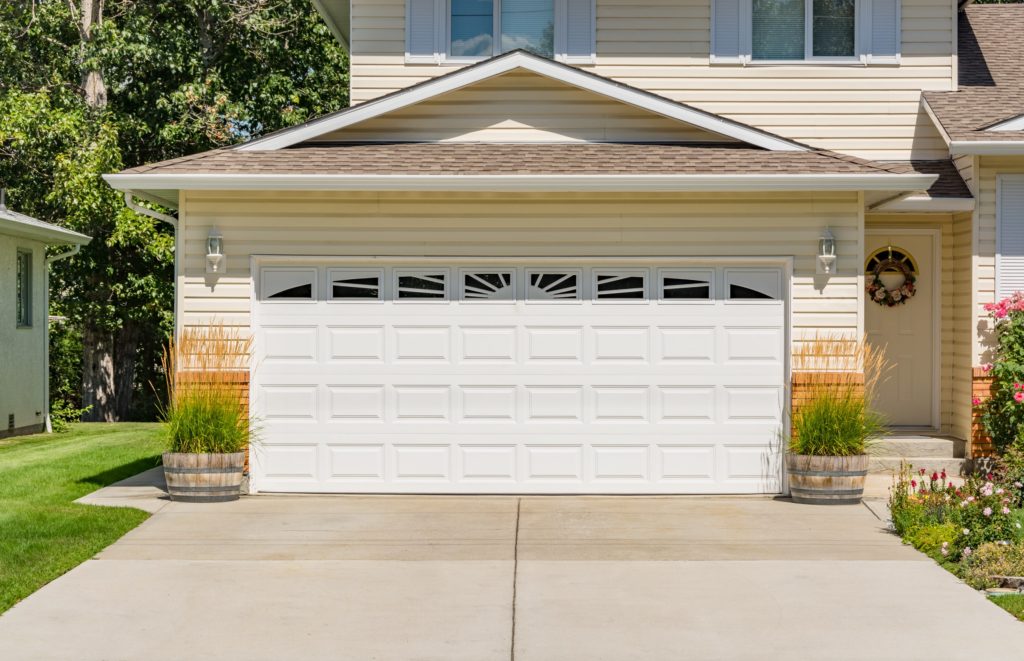Common Mistakes to Avoid During a Roof Replacement
Replacing a roof is one of the most significant investments homeowners can make. It’s not just about enhancing the curb appeal or increasing the resale value of your home; it’s about ensuring the safety and comfort of your family. However, the process can be fraught with pitfalls if you’re not careful. Avoiding common mistakes can save you time, money, and a lot of headaches. In this blog post, we’ll delve into the seven most common mistakes homeowners make during a roof replacement and how you can avoid them.
Neglecting to Get Multiple Quotes
Neglecting to get multiple quotes is a common mistake homeowners make when planning a roof replacement. Settling for the first contractor you come across can lead to overpaying or hiring someone who may not deliver quality work. By obtaining at least three quotes, you gain a broader perspective on pricing, services, and the overall market standard. This approach helps you avoid falling into the trap of high-pressure sales tactics that some contractors might employ. Multiple quotes allow you to compare and contrast different offers, ensuring you make an informed decision that aligns with your budget and expectations.
Additionally, seeking multiple quotes provides transparency and reveals the variations in the scope of work proposed by different contractors. Not all roofing companies offer the same services; some might include extras such as gutter replacement or enhanced warranties, while others may charge separately for these add-ons. By scrutinizing each quote, you can identify which contractor offers the best value for money and whose proposal includes essential details like material quality, labor costs, and project timelines. This level of detail is crucial for avoiding unexpected expenses and ensuring that all aspects of the roof replacement are covered.
Moreover, getting multiple quotes allows you to gauge the professionalism and reliability of potential contractors. Pay attention to how promptly they respond to your request, the thoroughness of their assessments, and their willingness to answer your questions. A contractor who takes the time to provide a detailed, transparent quote and explain the process is likely more trustworthy and committed to customer satisfaction. This diligence can prevent future issues and ensure that you choose a contractor who will complete the job to your standards. Ultimately, taking the time to gather multiple quotes equips you with the knowledge and confidence needed to select the best contractor for your roof replacement, safeguarding your investment and peace of mind.

Replacing New Roof
Choosing the Wrong Material
Choosing the wrong material for your roof replacement is a mistake that can have long-lasting repercussions. Different roofing materials are suited to various climates, architectural styles, and budgets. For instance, asphalt shingles may be a cost-effective and popular choice, but they might not provide the durability needed in extreme weather conditions. Similarly, while metal roofing offers excellent longevity and energy efficiency, it may not blend well with traditional home designs or might be overkill for areas with mild weather. Researching and understanding the pros and cons of each material can help you select the best option that aligns with your home’s needs and local climate.
Moreover, the wrong material choice can lead to higher maintenance costs and frequent repairs. Some materials, like wood shakes, require regular maintenance to prevent issues like mold and rot, making them less suitable for homeowners seeking low-maintenance solutions. On the other hand, synthetic materials might offer reduced maintenance but could lack the aesthetic appeal or durability of natural materials. Consulting with a professional roofing contractor can provide valuable insights into the performance and upkeep requirements of different materials, helping you make an informed decision that fits your lifestyle and maintenance preferences.
Lastly, choosing an inappropriate roofing material can affect your home’s energy efficiency and overall comfort. Materials like metal and tile can reflect more sunlight, reducing cooling costs in hot climates, whereas darker asphalt shingles can absorb heat, providing better insulation in colder regions. Additionally, some materials offer better soundproofing, fire resistance, or environmental benefits compared to others. By taking into account factors such as energy efficiency, environmental impact, and long-term performance, you can choose a roofing material that not only enhances your home’s curb appeal but also contributes to a comfortable and sustainable living environment. Avoiding the pitfall of choosing the wrong material ensures that your investment in a new roof delivers optimal benefits for years to come.
Overlooking Ventilation Needs
Overlooking ventilation needs is a common mistake that can compromise the effectiveness and longevity of a roof replacement. Proper ventilation is crucial for regulating temperature and moisture levels within the attic space, which directly impacts the health of your roofing system. Inadequate ventilation can lead to a build-up of heat during the summer months, causing shingles to deteriorate prematurely and increasing the strain on your home’s cooling system. Similarly, in the winter, poor ventilation can result in condensation build-up, leading to mold growth and potential damage to the roof’s structural integrity. Ensuring your new roof has adequate ventilation helps prevent these issues, extending the lifespan of your investment.
Additionally, neglecting proper ventilation can contribute to higher energy costs and reduced indoor comfort. When a roof is not properly ventilated, heat trapped in the attic can seep into the living areas, making it harder to maintain a comfortable temperature and forcing your HVAC system to work harder. This not only increases energy consumption but also raises utility bills. Moreover, consistent high temperatures in the attic can affect stored items and create an environment conducive to pest infestations. By incorporating proper ventilation into your roof replacement plan, you can enhance energy efficiency, reduce cooling costs, and promote a more comfortable living environment.
Lastly, ignoring ventilation can void warranties and result in costly repairs down the line. Many roofing material manufacturers stipulate proper ventilation as a condition for warranty coverage. Failure to comply with these requirements can nullify your warranty, leaving you financially responsible for any future repairs or replacements. A well-ventilated roof also helps maintain the overall structural health of your home, preventing issues such as wood rot, sagging roof decks, and other moisture-related damages. Consulting with a professional roofer to ensure your new roof includes adequate ventilation is essential for protecting your investment and ensuring long-term durability and performance. By prioritizing ventilation needs, you safeguard your home’s value and functionality for years to come.

Residential Roof Replacement
Ignoring Local Building Codes
Ignoring local building codes during a roof replacement is a mistake that can lead to significant legal and financial repercussions. Building codes are established to ensure the safety, durability, and performance of construction projects, including roofing. These regulations vary by location and cover aspects such as materials, roof installation methods, and structural requirements. Failing to adhere to these codes can result in fines, forced modifications, or even the need to redo the entire project. It’s essential to familiarize yourself with the specific building codes in your area and ensure that your roofing contractor is compliant with all local regulations.
Additionally, neglecting building codes can affect your insurance coverage and future property transactions. Insurance companies often require proof that any renovations or replacements meet local building standards. If your roof replacement does not comply, your insurance claim for potential damages might be denied, leaving you financially vulnerable. Moreover, non-compliant work can complicate future home sales. Potential buyers or their lenders may insist on an inspection, and discovering code violations could delay the sale or reduce the property’s value. Ensuring that your roof replacement adheres to local building codes protects your investment and maintains the integrity of your home.
Lastly, ignoring local codes can compromise the safety and functionality of your new roof. Building codes are designed to ensure that structures can withstand local environmental conditions, such as heavy snowfall, high winds, or seismic activity. A roof that doesn’t meet these standards may be more susceptible to damage, posing risks to the occupants and potentially leading to costly emergency repairs. By adhering to local building codes, you ensure that your roof is built to handle the specific challenges of your region, providing peace of mind and long-term reliability. Consulting with knowledgeable professionals who understand and respect these regulations is crucial for a successful and compliant roof replacement project.
Skipping the Inspection
Skipping the inspection phase during a roof replacement is a critical mistake that can undermine the entire project. An inspection serves as a quality check to ensure that the work has been completed to the highest standards and that no issues have been overlooked. Without this step, problems such as improperly installed shingles, insufficient ventilation, or hidden damage to the roofing structure can go unnoticed. These issues might not be immediately apparent but can lead to significant problems down the line, including leaks, mold growth, and even structural failures. Ensuring a thorough inspection is conducted by both the contractor and an independent third party helps catch any deficiencies early, protecting your investment and your home.
Moreover, an inspection provides peace of mind and validates the warranty coverage of your new roof. Many roofing warranties require a final inspection to activate the coverage. This ensures that the roof meets the manufacturer’s specifications and local building codes. Skipping this step can void the warranty, leaving you unprotected against future defects or failures. Additionally, an inspection report serves as documented proof of the roof’s condition at the time of completion, which can be valuable for insurance purposes and future property transactions. It reassures you that the job was done correctly and professionally, providing confidence in the integrity of your new roof.
Lastly, skipping the inspection can result in higher long-term costs and inconvenience. Undetected issues left unaddressed can escalate, leading to costly repairs or even necessitating another roof replacement sooner than expected. For example, a small leak that goes unnoticed during the initial installation can cause extensive water damage to the attic, insulation, and interior walls over time. This not only incurs repair costs but also disrupts your daily life. By prioritizing the inspection phase, you ensure that any potential problems are identified and rectified promptly, saving you from future expenses and maintaining the overall health of your home. A comprehensive inspection is an essential step towards ensuring the success and longevity of your roof replacement project near me.
Not Considering Long-Term Costs
Not considering long-term costs during a roof replacement is a common mistake that can lead to significant financial strain over time. While it might be tempting to opt for cheaper materials or the lowest bid from a contractor, these initial savings can be deceptive. Low-cost options often come with hidden expenses, such as more frequent repairs or replacements, higher maintenance requirements, and poor energy efficiency. Investing in higher-quality materials and skilled labor upfront can significantly reduce long-term costs by extending the lifespan of your roof and minimizing the need for ongoing maintenance. This strategic investment ensures that your roof remains durable and functional for many years, providing better value in the long run.
Furthermore, long-term costs are not limited to the price of materials and labor; they also include energy expenses and home insurance premiums. A well-installed roof with high-quality materials can improve your home’s insulation, reducing heating and cooling costs. For example, energy-efficient roofing materials reflect sunlight and reduce heat absorption, leading to lower air conditioning expenses during hot months. Similarly, durable roofing materials that withstand severe weather conditions can lower insurance premiums, as your home is less likely to incur damage. Considering these factors when planning your roof replacement helps you make a more informed decision that balances initial costs with future financial benefits.
Lastly, neglecting to consider long-term costs can affect the overall comfort and value of your home. A poorly chosen or installed roof can lead to issues such as leaks, poor ventilation, and inadequate temperature regulation, impacting your living conditions. Additionally, if you plan to sell your home in the future, potential buyers will likely scrutinize the roof’s condition and material quality. A well-maintained, high-quality roof can enhance your home’s marketability and command a higher selling price. By prioritizing long-term costs, you not only protect your financial interests but also ensure a safer, more comfortable, and valuable living environment. Making a thoughtful, forward-looking investment in your roof replacement pays dividends in terms of both immediate satisfaction and future savings.

Replacing Roof
Failing to Budget for Unexpected Repairs
Failing to budget for unexpected repairs during a roof replacement is a common oversight that can lead to significant financial and logistical issues. Roof replacement projects often reveal hidden problems, such as damaged decking, rotting wood, or outdated insulation, which need to be addressed to ensure the longevity and safety of the new roof. If these issues are not anticipated and budgeted for, homeowners may find themselves facing unexpected expenses that exceed their initial estimates. This can strain finances and potentially delay the completion of the project, causing further inconvenience and stress. Allocating a contingency fund within your budget helps manage these unforeseen costs and keeps the project on track.
Moreover, unexpected repairs can impact the overall scope and timeline of your roof replacement project. Discovering structural issues or other underlying problems mid-project means additional work must be done, extending the time required to complete the replacement. This can disrupt your daily life, especially if you need to make alternative living arrangements during the construction. Adequate planning and budgeting for potential repairs allow you to accommodate these changes without major disruptions. Discussing potential issues with your roofing contractor before starting the project can help you identify common problems and set realistic expectations for both costs and timelines.
Failing to budget for unexpected repairs can compromise the quality and effectiveness of your new roof. In an attempt to stay within an unplanned budget, some homeowners might opt for cheaper, temporary fixes rather than addressing the root causes of the issues. This approach can lead to recurring problems and additional costs down the line, as well as reduce the overall lifespan and performance of the new roof. A comprehensive budget that includes provisions for unexpected repairs ensures that all necessary work is completed to a high standard, safeguarding your investment and providing peace of mind. Proper financial planning for your roof replacement project not only ensures its success but also contributes to the long-term health and value of your home.
Conclusion
A roof replacement is a major project that requires careful planning and execution. By avoiding these common mistakes, you can ensure a smoother, more cost-effective experience. From getting multiple quotes to budgeting for unexpected repairs, each step is crucial for a successful roof replacement. Remember, taking the time to do it right the first time will save you from unnecessary stress and expenses down the road. So, as you embark on this significant home improvement journey, keep these tips in mind to safeguard your investment and enjoy peace of mind for years to come.
https://www.google.com/maps?cid=465871782046421571




